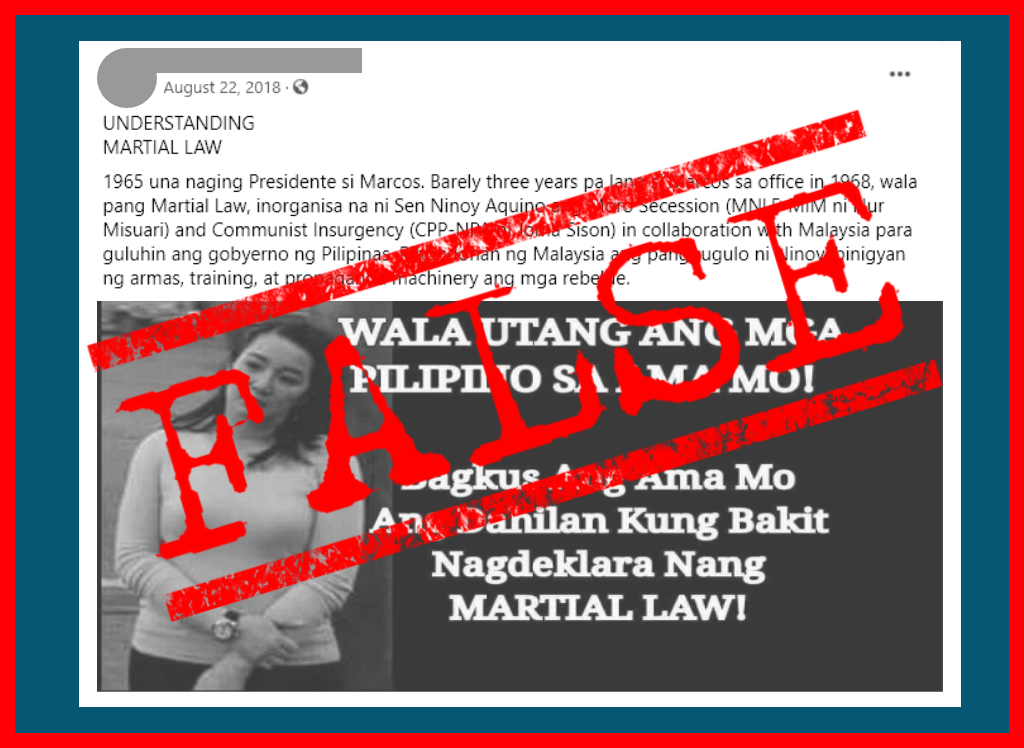Despite the abundance of evidence showing that the Philippine economy under Ferdinand Marcos was a disaster, “alternative facts” persist.
One example: On Youtube, the terms “Marcos economy” at once yield videos like “The Golden Era Economic Statistics” or “Golden Achievements of Ferdinand Marcos” falsely portraying the 20-year Marcos presidency as some sort of golden age.
Even President Rodrigo Duterte, knowingly or not, still gets things wrong.
One example: Duterte said in a speech Aug. 29 that Marcos took his fabled gold bars from the country’s vaults to “protect the country’s economy.” (See VERA FILES FACT CHECK: Duterte and Imelda tell contradicting stories about Marcos gold)
Yet, the question has long been settled by a wide range of books, academic papers and news reports.
The verdict: Marcos plunged the country into a catastrophic economic crisis, whose effects still linger to date.
From the sample, here are three readings, by no means exhaustive but helpful, as the Philippines marks Sept. 21 the 45th year since the declaration of martial law.
1. The truth about the economy under the Marcos regime
This column by University of the Philippines economics professor Emmanuel De Dios, written in 2015, can be read in under 10 minutes.
Though short, it packs a lot of details and, among others, debunks the myth that the the myriad infrastructure projects of the Marcos administration, funded by a mountain of foreign debt, are proof of his purported economic legacy.
“The economy’s record under Marcos is identical to that of a person who lives it up on credit briefly, becomes bankrupt, and then descends into extreme hardship indefinitely,” De Dios writes. “It would then be foolish to say that person managed his affairs marvelously, citing as evidence the opulent lifestyle he enjoyed before the bankruptcy.”
2. An analysis of the Philippine economic crisis
Written in June 1984, at the height of the economic crisis created by the Marcos regime, this 96-page report presents the findings of a workshop attended by several UP economics professors.
The report opens with a forthright conclusion: External circumstances such as the 1970s oil crisis and the assassination of then Sen. Benigno Aquino Jr. do not adequately explain the economic crisis under Marcos.
“The major explanation for its occurrence must lie in the character of the economic policies and of policymaking by the leadership,” the report read.
Among others, the report addresses the matter of external debt, a significant portion of which went to private firms.
“A substantial part of the foreign debt was either guaranteed by or channeled through government financial institutions,” the report read. “What might have been limited failures and corporate tragedies confined to private persons become transformed into a national economic crisis, and the burden of paying the debts of the few was passed on to the entire nation.”
3. The Philippine Economy: Development, Policies and Challenges
Fast-forward to 2003, this book examines the important dimensions of the Philippine economy, in search of explanations to what its editors call a “puzzle.”
“The Philippines is one of the world’s major development puzzles,” write Philippine Competition Commission chair and former economic planning secretary Arsenio Balisacan and Australian National University professor Hal Hill in their introduction.
For one, long-term development has eluded the country despite favorable initial conditions post-independence, such as having then a higher per capita income relative to its now more well-off regional neighbors South Korea, Taiwan, China and Indonesia, they write.
There are no easy answers, but the Marcos era is an important part of the explanation.
Balisacan and Hill write:
“In the second decade of the Marcos administration, the development strategy changed to one of adventurous overseas borrowing. This came unstuck owing to a combination of reckless investments, ever-increasing cronyism and corruption, rising community disaffection (especially in the wake of the 1983 Aquino assassination), and external misfortune. The culmination was a serious political impasse and a deep and prolonged economic crisis that set the country back more than a decade, and from which recovery has been slow and painful.”
— Jake Soriano
(Guided by the code of principles of the International Fact-Checking Network at Poynter, VERA Files tracks the false claims, flip-flops, misleading statements of public officials and figures, and debunks them with factual evidence. Find out more about this initiative.)





